Do you have a question about the Brother HL-L8350CDW and is the answer not in the manual?
Provides an overview of the machine's physical aspects and components.
Details types of paper and media compatible with the printer for optimal results.
Guidelines for using special paper types and envelopes, and types to avoid.
Shows unprintable areas and instructions for loading paper into trays.
Introduces the 2-sided printing capability and its guidelines.
Instructions for printing directly from USB devices and creating PRN files.
Explains what a printer driver is and where to obtain the latest versions.
Details settings available in the Windows printer driver, including Basic and Advanced tabs.
Details driver features and setup options specific to Macintosh operating systems.
Instructions for removing drivers and using the Status Monitor utility.
Describes the physical components of the printer's control panel and their functions.
Explains the meaning of LED indicators and various machine status messages.
Guides on accessing machine settings via the control panel menu and tables.
Overview of security settings like Setting Lock, Secure Function Lock, and IPSec.
Features for saving toner, power consumption, and reducing printing noise.
Procedures for calibrating and registering colors to improve print density and alignment.
Details about optional accessories like the lower tray and SO-DIMM memory modules.
Step-by-step guide for installing SO-DIMM memory modules into the machine.
Lists user-replaceable supplies such as toner, drum, belt, and waste toner box.
Instructions for replacing toner cartridges and resetting related counters.
Guide on how to replace the drum unit and reset its counter.
Procedures for replacing the belt unit and the waste toner box.
Instructions for cleaning the machine's exterior, interior, corona wires, and drum unit.
Guides for cleaning pick-up rollers and replacing periodic maintenance parts.
Guidelines for safely packing and shipping the machine for transit or service.
Initial checks and steps to identify the cause of machine issues.
A reference guide to common error messages, causes, and actions.
Steps to resolve paper jams in various locations within the machine.
Addresses common difficulties like no printout, poor quality, and paper feeding problems.
Guide to resolving print quality issues like compressed pages, light colors, or streaks.
How to check machine serial number, default settings, and perform resets.
Detailed technical specifications including general, noise, temperature, and humidity.
Comprehensive information on paper types, sizes, printer performance, and interfaces.
Details on network connectivity, direct print, and system compatibility.
Important advice on choosing the right paper for optimal machine performance.
Lists consumables like toner, drum, belt, and waste toner box with order numbers.
Information on toner life detection, color/mono settings, and color correction.
Contact numbers, websites for FAQs, and product registration information.
Instructions and details on how to order genuine Brother supplies and accessories.
Provides an overview of the machine's physical aspects and components.
Details types of paper and media compatible with the printer for optimal results.
Guidelines for using special paper types and envelopes, and types to avoid.
Shows unprintable areas and instructions for loading paper into trays.
Introduces the 2-sided printing capability and its guidelines.
Instructions for printing directly from USB devices and creating PRN files.
Explains what a printer driver is and where to obtain the latest versions.
Details settings available in the Windows printer driver, including Basic and Advanced tabs.
Details driver features and setup options specific to Macintosh operating systems.
Instructions for removing drivers and using the Status Monitor utility.
Describes the physical components of the printer's control panel and their functions.
Explains the meaning of LED indicators and various machine status messages.
Guides on accessing machine settings via the control panel menu and tables.
Overview of security settings like Setting Lock, Secure Function Lock, and IPSec.
Features for saving toner, power consumption, and reducing printing noise.
Procedures for calibrating and registering colors to improve print density and alignment.
Details about optional accessories like the lower tray and SO-DIMM memory modules.
Step-by-step guide for installing SO-DIMM memory modules into the machine.
Lists user-replaceable supplies such as toner, drum, belt, and waste toner box.
Instructions for replacing toner cartridges and resetting related counters.
Guide on how to replace the drum unit and reset its counter.
Procedures for replacing the belt unit and the waste toner box.
Instructions for cleaning the machine's exterior, interior, corona wires, and drum unit.
Guides for cleaning pick-up rollers and replacing periodic maintenance parts.
Guidelines for safely packing and shipping the machine for transit or service.
Initial checks and steps to identify the cause of machine issues.
A reference guide to common error messages, causes, and actions.
Steps to resolve paper jams in various locations within the machine.
Addresses common difficulties like no printout, poor quality, and paper feeding problems.
Guide to resolving print quality issues like compressed pages, light colors, or streaks.
How to check machine serial number, default settings, and perform resets.
Detailed technical specifications including general, noise, temperature, and humidity.
Comprehensive information on paper types, sizes, printer performance, and interfaces.
Details on network connectivity, direct print, and system compatibility.
Important advice on choosing the right paper for optimal machine performance.
Lists consumables like toner, drum, belt, and waste toner box with order numbers.
Information on toner life detection, color/mono settings, and color correction.
Contact numbers, websites for FAQs, and product registration information.
Instructions and details on how to order genuine Brother supplies and accessories.
| Color | Yes |
|---|---|
| N-up printing | 2, 4, 9, 16, 25 |
| Print technology | Laser |
| Maximum resolution | 2400 x 600 DPI |
| Time to first page (black, normal) | 15 s |
| Print speed (black, normal quality, A4/US Letter) | 30 ppm |
| Duplex print speed (black, normal quality, A4/US Letter) | 7 ppm |
| PCL fonts | 66 |
| Printing colors | Black, Cyan, Magenta, Yellow |
| Maximum duty cycle | 60000 pages per month |
| Recommended duty cycle | 750 - 4.000 pages per month |
| Number of print cartridges | 4 |
| Page description languages | BR-Script 3, PCL 6 |
| Paper input type | Paper tray |
| Total input capacity | 250 sheets |
| Total output capacity | 150 sheets |
| Multi-Purpose tray input capacity | 50 sheets |
| Paper tray media types | Bond paper, Envelopes, Glossy paper, Labels, Plain paper, Recycled paper, Thick paper, Thin paper |
| Non-ISO print media sizes | Executive (184 x 267mm), Folio (media size), Letter (media size), Legal (media size) |
| ISO A-series sizes (A0...A9) | A4, A5 |
| ISO B-series sizes (B0...B9) | B6 |
| Maximum ISO A-series paper size | A4 |
| Paper tray media weight (imperial) | 16 - 28 lbs |
| Multi-Purpose Tray media weight (imperial) | 16 - 43 lbs |
| Wi-Fi standards | 802.11b, 802.11g, Wi-Fi 4 (802.11n) |
| Security algorithms | EAP-MD5, 128-bit WEP, 64-bit WEP, 802.1x RADIUS, EAP-FAST, EAP-TLS, EAP-TTLS, LEAP, PEAP, WPA-AES, WPA-PSK, WPA-TKIP, WPA2-AES, WPA2-PSK |
| Mobile printing technologies | Apple AirPrint, Brother iPrint & Scan, Google Cloud Print |
| Supported network protocols (IPv4) | ARP, RARP, BOOTP, DHCP, APIPA(Auto IP), WINS/NetBIOS name resolution, DNS Resolver, mDNS, LLMNR responder, LPR/LPD, Custom Raw Port/Port9100, IPP/IPPS, FTP Server, TELNET Server, HTTP/HTTPS server, TFTP client and server, SMTP Client, SNMPv1/v2c/ v3, ICMP, Web Services (Print), CIFS client, SNTP client |
| Supported network protocols (IPv6) | NDP, RA, DNS resolver, mDNS, LLMNR responder, LPR/LPD, Custom Raw Port/Port9100, IPP/IPPS, FTP Server, TELNET Server, HTTP/HTTPS server, TFTP client and server, SMTP Client, SNMPv1/v2c/v3, ICMPv6, Web Services (Print), CIFS Client, SNTP Client |
| Standard interfaces | Ethernet, USB 1.1, USB 2.0, Wireless LAN |
| USB 2.0 ports quantity | 1 |
| Processor family | Star Sapphire |
| Maximum internal memory | 384 MB |
| Sound pressure level (printing) | 53.5 dB |
| Sound pressure level (quiet mode) | 50.6 dB |
| Display | LCD |
| Product color | Black, Silver |
| Display number of lines | 2 lines |
| AC input voltage | 110 - 120 V |
| AC input frequency | 50 - 60 Hz |
| Power consumption (off) | 0.04 W |
| Power consumption (standby) | 65 W |
| Power consumption (printing) | 540 W |
| Power consumption (PowerSave) | 7.5 W |
| Sustainability certificates | ENERGY STAR |
| Operating relative humidity (H-H) | 20 - 80 % |
| Package depth | 524 mm |
| Package width | 600 mm |
| Package height | 513 mm |
| Package weight | 25200 g |
| Cables included | AC |
| Depth | 486 mm |
|---|---|
| Width | 410 mm |
| Height | 313 mm |

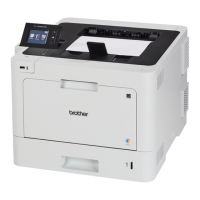



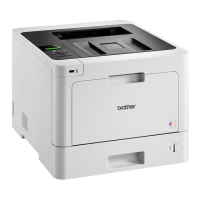


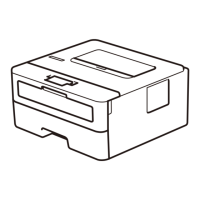

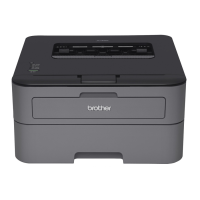
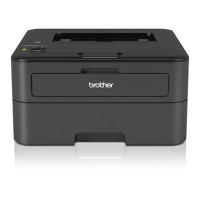
